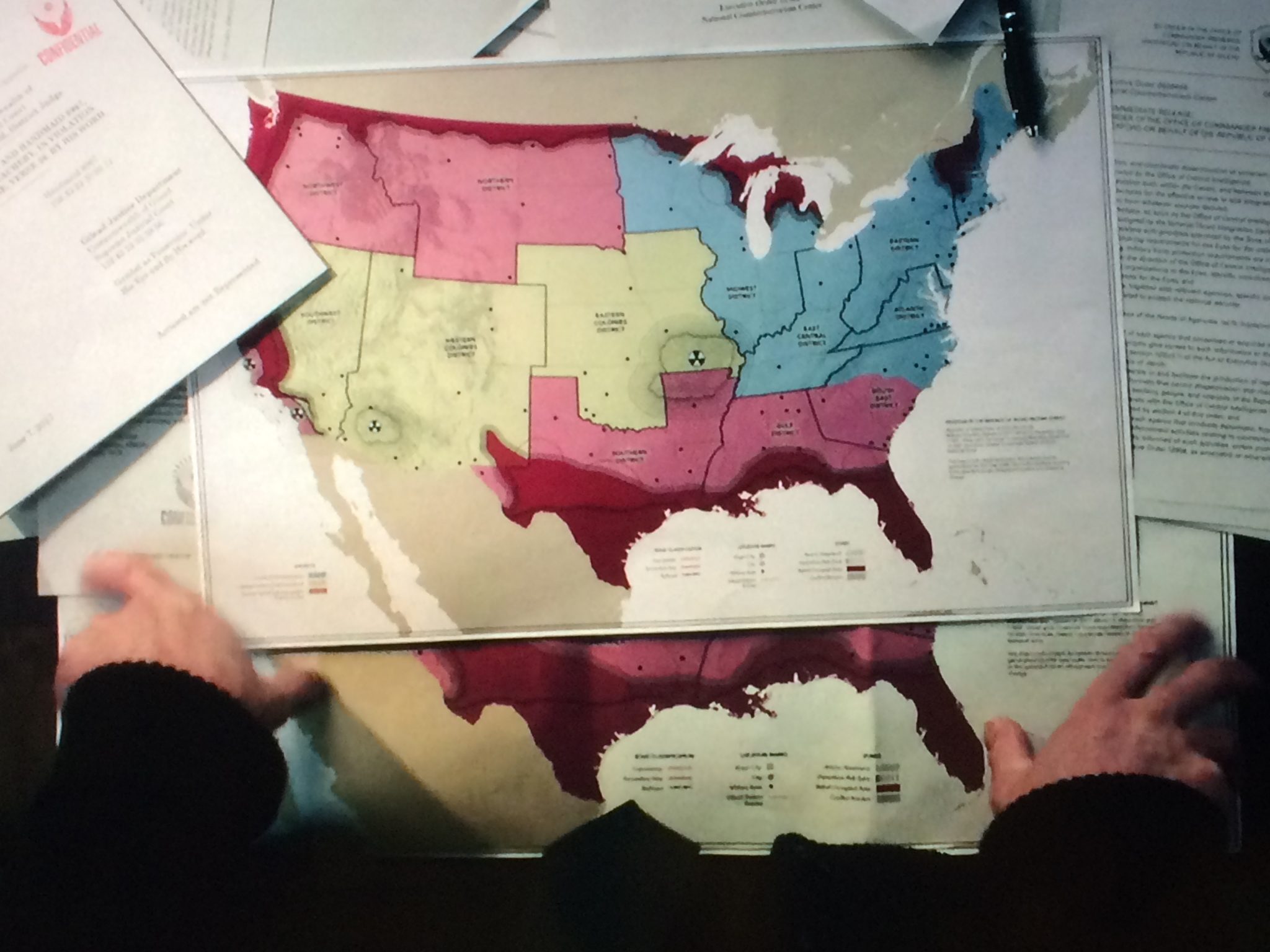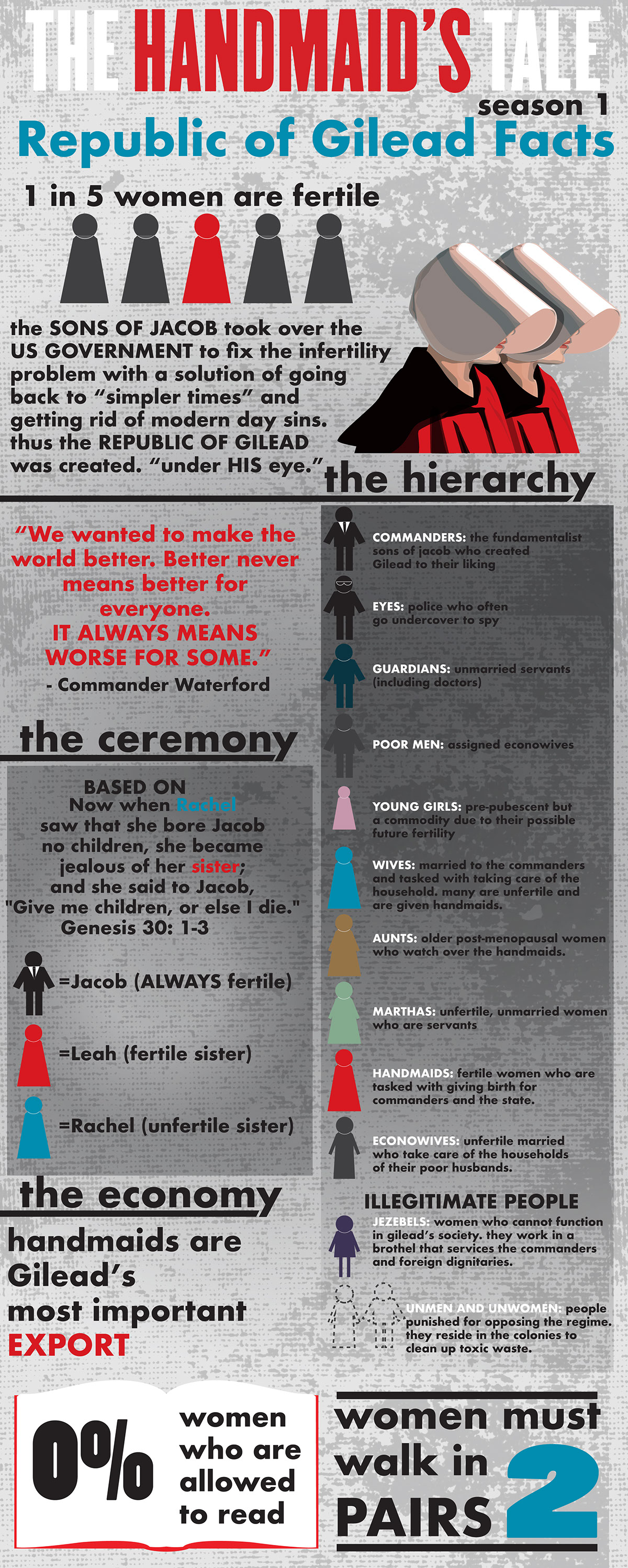The Handmaid's Tale, a thought-provoking dystopian novel and television series, has captivated audiences with its chilling depiction of a totalitarian society where women are systematically oppressed.

The Handmaid's Tale: 10 intriguing facts about Margaret Atwood's - Source www.cbc.ca
Editor's Notes: The Handmaid's Tale: Unraveling The Dystopian World Of Gilead has published today date. This topic is important to read because it offers a critical look at the dangers of extremism, the erosion of individual rights, and the consequences of unchecked power.
After analyzing various sources and conducting thorough research, we have compiled this guide to provide insights into the dystopian world of Gilead and its profound implications.
Key Differences:
| Characteristic | Gilead | Traditional Society |
|---|---|---|
| Gender Roles | Women are subservient; men hold all power | Gender equality or varying degrees of it |
| Reproduction | Handmaids are forced to bear children for elite families | Reproduction is a choice for individuals or couples |
| Freedom | Citizens are constantly monitored and controlled | Individuals enjoy basic rights and freedoms |
Transition to main article topics:
- The genesis of Gilead and its totalitarian ideology
- The experiences of Offred, a Handmaid navigating Gilead's oppressive regime
- The themes of resistance, resilience, and hope in the face of adversity
- The broader implications of Gilead's dystopia and its parallels to contemporary society
FAQ
This FAQ section provides detailed responses to frequently asked questions about the dystopian world of Gilead in "The Handmaid's Tale".

The Handmaid's Tale: A Map of Gilead vs the US in Season 2 - Source www.postapocalypticmedia.com
Question 1: What is the primary ideology that underpins Gilead's society?
Answer: Gilead's society is built on the principles of Christian fundamentalism, which shapes every aspect of life, including the roles of women, the structure of families, and the enforcement of strict religious laws.
Question 2: How did Gilead come into existence?
Answer: Gilead emerged after a violent coup by a radical religious group known as the Sons of Jacob. They overthrew the United States government and established a totalitarian theocracy.
Question 3: What is the significance of the handmaids in Gilead?
Answer: Handmaids are fertile women who are forced into sexual slavery to bear children for infertile couples within the ruling class. They serve as a means of procreation and are stripped of their identities and basic human rights.
Question 4: How does Gilead control and oppress its population?
Answer: Gilead employs a system of surveillance, propaganda, and punishments to maintain control. The Eyes monitor citizens for dissent, while the Guardians enforce laws brutally. Suspected dissidents are subjected to torture, imprisonment, or execution.
Question 5: What is the role of women in Gilead?
Answer: Women in Gilead are relegated to specific roles based on their reproductive capabilities. Fertile women become handmaids, wives oversee their households, and Marthas serve as domestic workers. All women are denied education, employment, and any semblance of autonomy.
Question 6: What is the ultimate fate of Gilead?
Answer: The novel's ending remains ambiguous, but it suggests that Gilead's oppressive regime is facing internal challenges and external resistance. The future of Gilead and the fate of its citizens are uncertain.
This FAQ section has provided insights into the fundamental aspects of Gilead's dystopian society and its implications for the individual and society at large.
Continue reading to explore further aspects of "The Handmaid's Tale" in the next section.
Tips
Discover The Handmaid's Tale: Unraveling The Dystopian World Of Gilead — a deep dive into the chilling world of Margaret Atwood's masterpiece.
Tip 1: Symbolism is key:
From the red uniforms of the Handmaids to the Eyes' surveillance, symbolism permeates the novel. Analyze these symbols to comprehend the oppressive nature of Gilead.
Tip 2: Explore the resistance:
Despite the suffocating environment, resistance persists in Gilead. Study the characters and events that embody this fight against tyranny.
Tip 3: Examine the complexities of power:
Power dynamics in Gilead are intricately layered. Examine the roles played by the Commanders, Aunts, and Handmaids to grasp the manipulative tactics of the regime.
Tip 4: Consider the impact of trauma:
The women of Gilead have endured unspeakable trauma. Analyze how this impacts their psychology, relationships, and ability to cope with their oppressive existence.
Tip 5: Draw parallels to contemporary issues:
Find connections between Gilead and present-day concerns such as gender inequality, government overreach, and the suppression of dissent. This will enhance your understanding of the novel's enduring relevance.
These tips provide a roadmap for navigating the complexities of Gilead. Delve into The Handmaid's Tale: Unraveling The Dystopian World Of Gilead with these insights to uncover the profound depths of this classic work.
The Handmaid's Tale: Unraveling The Dystopian World Of Gilead
In Margaret Atwood's dystopian novel, "The Handmaid's Tale," a totalitarian society known as Gilead enforces a rigid and oppressive system upon its citizens. To thoroughly understand this unsettling realm, it is essential to unravel the complexities that define it. This exploration delves into six key aspects:
- Oppressive Regime: An authoritarian government enforces control through fear and violence.
- Subjugated Women: Women are denied basic rights and treated as property.
- Environmental Degradation: Pollution and infertility plague the land.
- Religious Extremism: A perversion of faith justifies the regime's cruelties.
- Surveillance and Censorship: Constant monitoring suppresses dissent and controls information.
- Resistance and Hope: Despite the oppression, individuals find ways to defy the system and seek redemption.

‘The Handmaid’s Tale’ Turned a DC on the Verge of Shutdown into Gilead - Source www.indiewire.com
These aspects intertwine to create a chilling and oppressive world. Gilead's oppressive regime, coupled with the subjugation of women, creates a suffocating atmosphere. Environmental degradation reflects the consequences of unchecked power. Religious extremism provides a twisted justification for the horrors inflicted. Surveillance and censorship prevent resistance. However, amidst the darkness, the resilience and hope of individuals serve as a beacon of defiance against the dystopian regime.
The Handmaid's Tale: Unraveling The Dystopian World Of Gilead
In the world of Margaret Atwood's "The Handmaid's Tale," the dystopian society of Gilead is a chilling allegory for the dangers of religious extremism and the suppression of women's rights. The connection between the book and the real world is evident in the way it explores the systematic oppression of women through the lens of a patriarchal society, the consequences of unchecked extremism, and the importance of resistance and the preservation of autonomy.

The Handmaid's Tale Republic of Gilead Infographic :: Behance - Source www.behance.net
The Handmaid's Tale effectively illustrates the dangers of unquestioning obedience and the importance of individuality. Through its depiction of Gilead's oppressive society, the book highlights the need for critical thinking, free expression, and the protection of civil liberties. It serves as a cautionary tale about the potential consequences of allowing extremist ideologies to gain power, and the vital role of resistance in safeguarding democratic values and individual rights.
The Handmaid's Tale emphasizes the importance of compassion and understanding in the face of oppression. The novel explores how the characters find strength and resilience through connections with others, highlighting the power of human connection and the indomitable spirit of those who fight against injustice.
| Aspects | Connection |
|---|---|
Conclusion
The Handmaid's Tale remains a powerful exploration of the dangers of unchecked extremism and the importance of resistance. It highlights the crucial role of critical thinking, individuality, and human connection in safeguarding democratic values and individual rights. The book serves as a reminder that complacency and apathy can have dire consequences, and that the fight for justice and equality is an ongoing one.
The work of Atwood and others like her who explore dystopian societies is invaluable in raising awareness about the potential dangers of unchecked power, suppression of dissent, and the importance of preserving individual freedoms. Through their writings, they challenge us to question our own assumptions and to recognize the warning signs of oppression, ultimately empowering us to work towards a more just and equitable world.